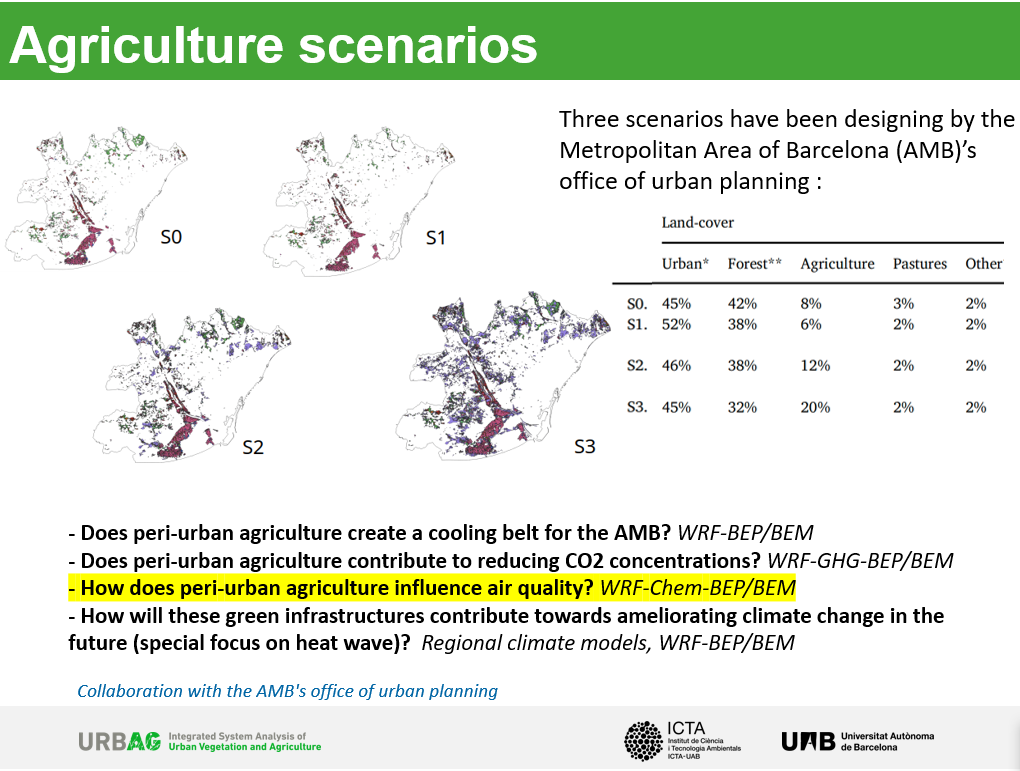URBAG presentation at the 13th International Conference on Air Quality
11 July 2022Alba Badia gave a talk on “How green infrastructures impact urban air quality over Barcelona” in which she discussed the air quality changes between the reference scenario and the scenarios that have been designed by the Metropolitan Area of Barcelona (AMB)’s office of urban planning. She presented air quality changes for nitrogen dioxide (NO2), volatile organic compounds (VOCs), and ozone (O3) using the WRF-Chem model. Results show that when adding urban areas there is an increase in temperature (up to 1.3ºC), a decrease in the wind speed (up to 1.5 m/s) and an increase in the boundary layer (up to 80m) that results in areas with 1) an increase in primary pollutants (25% for NO2 and 22% for VOC) and a decrease in O3 (10%) and 2) other areas that there is a decrease in primary pollutants (18% for NO2 and 18% for VOC) and an increase in O3 (17%). In addition, when more agriculture is added, we found changes in the local meteorology and in the local air quality for NO2 (- 4 ug/m3, 10% to 4 ug/m3, 25%), for VOCs (- 10 ug/m3, 16% to 8 ug/m3, 10%) and for O3 (-5 ug/m3, 12% to 5 ug/m3, 10%). These changes are found in the afternoon (anthropogenic emission peak) and in the nighttime (urban heat island effect is the strongest). For more information on the conference, please visit https://www.herts.ac.uk/airqualityconference
Slide presented by Alba Badia at the 13th International Conference on Air Quality
